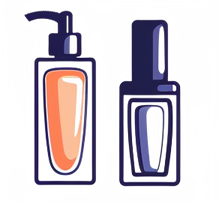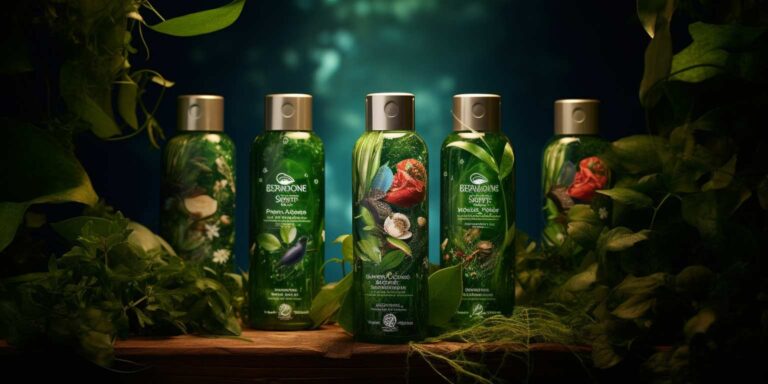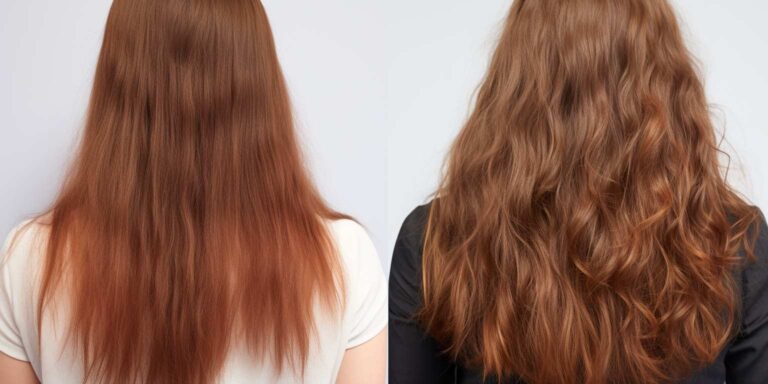Finding the best anti-frizz shampoo for your hair
Frizzy hair can be a daily battle, leaving you feeling frustrated and defeated. The key to taming those unruly locks starts with finding the best anti-frizz shampoo that works wonders for your hair type. With a plethora of options flooding the market, it’s essential to know what ingredients and features to look for to achieve sleek, smooth hair.
Firstly, when hunting for the perfect anti-frizz shampoo, keep an eye out for products labeled as smoothing or frizz-control. These formulations are specifically designed to combat frizz by providing intense hydration and sealing the hair cuticle to prevent moisture from penetrating.
Key Ingredients to Look For:
| 1. Argan Oil: | Renowned for its moisturizing properties, argan oil helps nourish and tame frizz-prone hair, leaving it silky and manageable. |
| 2. Coconut Oil: | Rich in fatty acids, coconut oil penetrates deep into the hair shaft, replenishing moisture and combating frizz effectively. |
| 3. Keratin: | As a protein naturally found in hair, keratin-infused shampoos help strengthen and smooth the hair cuticle, reducing frizz and promoting shine. |
Additionally, sulfate-free shampoos are gentle on the hair and scalp, preventing moisture loss and maintaining the natural oils essential for frizz-free locks. Sulfates can strip the hair of its natural oils, exacerbating frizz and dryness.
How to Use:
- Wet your hair thoroughly with lukewarm water.
- Apply a generous amount of anti-frizz shampoo to your palms and massage it into your scalp, working it through the lengths of your hair.
- Rinse thoroughly and repeat if necessary.
- Follow up with a matching conditioner for added hydration and frizz control.
Understanding frizz and how to combat it
Frizz, that unruly nemesis of many a hair enthusiast, can turn a good hair day into a frustrating battle. Understanding the root causes of frizz and learning effective strategies to combat it are essential for maintaining smooth, sleek locks.
What Causes Frizz?
Frizz occurs when the outer layer of the hair shaft, known as the cuticle, becomes raised and allows moisture from the air to penetrate the hair strand. This causes the hair to swell and create that dreaded frizzy appearance. Several factors contribute to this phenomenon:
- Humidity: High humidity levels are notorious for exacerbating frizz. When the air is humid, the hair’s cuticle tends to swell, leading to frizz.
- Dryness: On the flip side, dry hair is more prone to frizz as well. When the hair lacks moisture, the cuticle seeks hydration from the surrounding environment, resulting in frizz.
- Damage: Damaged hair cuticles are more likely to become raised and allow moisture to penetrate, leading to frizz. Common causes of damage include heat styling, chemical treatments, and rough handling.
Combatting Frizz:
While frizz can be stubborn, it is not invincible. By incorporating the right techniques and products into your hair care routine, you can effectively tame frizz and achieve smoother, more manageable hair.
Hydration is Key:
Moisturizing your hair is crucial for preventing frizz. Opt for hydrating shampoos and conditioners formulated to nourish and seal the cuticle. Additionally, incorporate weekly deep conditioning treatments to replenish moisture and strengthen the hair shaft.
Use Anti-Frizz Products:
Invest in quality anti-frizz products such as serums, creams, and oils specifically designed to combat frizz. These products work by coating the hair shaft, smoothing the cuticle, and providing a barrier against humidity.
| Product Type | Key Ingredients | Benefits |
|---|---|---|
| Serums | Argan oil, silicone | Smooths frizz, adds shine |
| Creams | Shea butter, coconut oil | Hydrates, controls flyaways |
| Oils | Jojoba oil, grapeseed oil | Nourishes, tames frizz |
Avoid Over-Processing:
Limit the use of heat styling tools and chemical treatments, as these can damage the hair cuticle and exacerbate frizz. When using heat styling tools, always apply a heat protectant spray to minimize damage.
Gentle Hair Care:
Handle your hair with care to prevent unnecessary breakage and frizz. Use a wide-tooth comb to detangle wet hair, as it causes less damage compared to brushing. Additionally, avoid rubbing your hair vigorously with a towel; instead, gently squeeze out excess moisture.
Key ingredients in anti-frizz shampoos
Picture this: a world where unruly strands and rebellious curls bow down to the magic of anti-frizz shampoos. As we embark on a journey to unravel the secrets behind these hair-care superheroes, let’s dive into the realm of key ingredients that make these elixirs a must-have in your beauty arsenal.
At the forefront of the anti-frizz revolution, silicones reign supreme. These molecular wizards create a protective shield around each strand, sealing in moisture and banishing frizz with a flick of their magic wand. Look out for terms like dimethicone or cyclomethicone on the ingredient list – these are your assurance of silky, smooth locks.
Now, let’s talk about the hydrating heroes – humectants. These moisture-attracting marvels, such as glycerin and propylene glycol, ensure your tresses stay hydrated, preventing them from succumbing to the dryness that often leads to frizz. It’s like giving your hair a refreshing sip of water in the middle of a scorching desert.
But the anti-frizz brigade doesn’t stop there. Proteins play a crucial role, acting as the knights in shining armor for your hair. Hydrolyzed keratin, collagen, or soy protein – these defenders strengthen your strands, repairing damage and shielding them from the chaotic frizz storm.
Enter the stage, the detangling divas – fatty alcohols. No, these are not the drying alcohols that leave your hair parched. These are the benevolent alcohols like cetyl alcohol and stearyl alcohol that moisturize and smooth without the unwanted side effects.
Now, let’s shed light on the botanical wonders. Argan oil, derived from the kernels of the Moroccan argan tree, adds a touch of luxury to anti-frizz shampoos. Rich in vitamins and antioxidants, it nourishes and tames your mane, leaving it with a radiant sheen.
It’s worth mentioning the unsung hero, panthenol – a form of vitamin B5. This multitasking magician not only moisturizes but also adds volume and shine to your hair, making it a key player in the anti-frizz symphony.
In the complex orchestra of anti-frizz formulations, compatibility is key. The interaction of these ingredients is what transforms a mere shampoo into a potent elixir, capable of turning the most stubborn strands into obedient, sleek locks.
Top rated anti-frizz shampoos for different hair types
When battling frizz, finding the right shampoo is like discovering a secret weapon in your beauty arsenal. With a myriad of options available, it’s crucial to pinpoint the top-rated anti-frizz shampoos tailored to your specific hair type. Whether your locks are curly, straight, thick, or fine, there’s a shampoo out there waiting to tame your mane.
For those blessed with curly hair, the struggle against frizz can feel like an uphill battle. Enter SheaMoisture Coconut & Hibiscus Curl & Shine Shampoo. Enriched with coconut oil and silk protein, this formula hydrates thirsty curls while combating frizz, leaving behind defined, bouncy coils.
If you’re dealing with straight hair that seems to have a mind of its own, consider L’Oréal Paris EverPure Frizz-Defy Shampoo. Infused with marula oil, this shampoo gently cleanses while providing intense moisture to combat frizz, leaving your locks sleek and manageable.
Thick hair can often feel unruly and prone to frizz, but fear not—Moroccanoil Moisture Repair Shampoo is here to save the day. Packed with argan oil and keratin, this shampoo strengthens and nourishes thick strands, effectively taming frizz and restoring vitality.
On the flip side, fine hair requires a delicate touch to combat frizz without weighing it down. Look no further than Living Proof No Frizz Shampoo. This lightweight formula harnesses the power of a patented molecule to block humidity, leaving fine hair smooth and frizz-free without sacrificing volume.
For those with color-treated hair, maintaining vibrancy while fighting frizz is essential. Enter Redken Frizz Dismiss Shampoo. Formulated with sustainably sourced babassu oil, this shampoo gently cleanses while protecting color-treated locks from frizz-inducing humidity.
When it comes to oily hair prone to frizz, it’s crucial to find a balance between cleansing and hydrating. OGX Anti-Frizz Hydrating Kukui Oil Shampoo strikes that perfect equilibrium, effectively removing excess oil and impurities while imparting lightweight hydration to keep frizz at bay.
In the realm of natural and organic options, Avalon Organics Smoothing Shampoo stands out. Infused with nourishing botanicals such as babassu oil and aloe vera, this shampoo gently cleanses while smoothing frizz and enhancing shine, all without harsh chemicals or sulfates.
How to incorporate anti-frizz shampoo into your routine
When it comes to taming frizz, incorporating anti-frizz shampoo into your hair care routine can make a world of difference. Frizzy hair is often the result of moisture imbalance, causing the hair shaft to swell and become unruly. Anti-frizz shampoos are formulated with ingredients that help to combat this issue, leaving your hair smooth, sleek, and manageable.
So, how exactly can you incorporate anti-frizz shampoo into your routine effectively? Let’s break it down:
| 1. Choose the Right Shampoo: | Selecting the appropriate anti-frizz shampoo is crucial. Look for products that contain ingredients such as argan oil, keratin, shea butter, or coconut oil. These ingredients help to nourish and hydrate the hair, reducing frizz and leaving it smoother. |
| 2. Wash with Lukewarm Water: | When washing your hair with anti-frizz shampoo, use lukewarm water instead of hot water. Hot water can strip the hair of its natural oils, leading to increased frizz. Lukewarm water helps to keep the hair cuticle smooth and prevents frizz from forming. |
| 3. Apply the Shampoo Correctly: | Take a small amount of anti-frizz shampoo and lather it between your palms. Gently massage the shampoo into your scalp and hair, focusing on the roots and areas prone to frizz. Avoid scrubbing vigorously, as this can cause tangles and further damage. |
| 4. Rinse Thoroughly: | After shampooing, rinse your hair thoroughly with cool water. Make sure to remove all traces of shampoo to prevent product buildup, which can weigh down the hair and contribute to frizz. |
| 5. Follow with Conditioner: | After shampooing, follow up with a conditioner specifically designed to combat frizz. Apply the conditioner from mid-length to the ends of your hair, avoiding the roots. Leave it on for a few minutes before rinsing thoroughly. |
| 6. Use a Wide-Tooth Comb: | After washing and conditioning, gently detangle your hair using a wide-tooth comb. Start from the ends and work your way up to the roots, being careful not to pull or tug at the hair. This helps to prevent breakage and minimize frizz. |
Incorporating anti-frizz shampoo into your hair care routine doesn’t have to be complicated. With the right products and techniques, you can achieve smooth, frizz-free locks that look and feel amazing.
Diy tips for frizz-free hair
Frizz can be the bane of every hair enthusiast’s existence. It’s that unwelcome halo of fuzz that seems to have a mind of its own, especially on humid days. But fear not! There are DIY tips that can help you achieve frizz-free hair without breaking the bank or spending hours in the salon.
First and foremost, let’s talk about shampooing. Opt for a sulfate-free shampoo as sulfates can strip your hair of its natural oils, leading to dryness and frizz. Look for products containing moisturizing ingredients like argan oil or coconut oil to help combat frizz right from the start of your haircare routine.
After shampooing, it’s essential to condition your hair thoroughly. Choose a deep conditioning treatment or hair mask that is specifically formulated to hydrate and smooth frizzy hair. Leave it on for the recommended time to allow the ingredients to penetrate the hair shaft and work their magic.
Once a week, treat your hair to a hot oil treatment using natural oils such as olive oil or coconut oil. Heat the oil slightly and apply it to your hair from roots to ends. Cover your hair with a shower cap and leave the oil on for at least 30 minutes before shampooing and conditioning as usual. This deep conditioning treatment will help restore moisture to your hair and keep frizz at bay.
When it comes to styling, avoid using heat tools excessively as they can damage your hair and contribute to frizz. Instead, embrace heat-free styling techniques like braiding or twisting your hair while damp to create natural waves without the frizz.
Another tip for combating frizz is to invest in a microfiber towel or t-shirt to dry your hair. Regular towels can rough up the hair cuticle and cause frizz, whereas microfiber towels or t-shirts are gentler on the hair, resulting in smoother strands.
Finally, seal the deal with a smoothing serum or anti-frizz cream to keep flyaways at bay throughout the day. Apply a small amount of product to your palms and gently smooth it over your hair, focusing on the mid-lengths and ends where frizz tends to be more prevalent.
The science behind anti-frizz shampoos
When battling frizz, anti-frizz shampoos often emerge as the knight in shining armor, promising smoother, more manageable locks. But what’s the wizardry behind these potions? Let’s delve into the science that makes them so effective.
At the heart of anti-frizz shampoos lies the formulation. These shampoos are enriched with ingredients specifically chosen to combat frizz-causing factors.
One key component found in anti-frizz shampoos is silicones. These compounds form a protective barrier around each strand, sealing in moisture and preventing humidity from wreaking havoc on your hair.
Another crucial ingredient is humectants. These moisture-attracting agents ensure that your hair stays hydrated, reducing the likelihood of frizz formation.
Furthermore, anti-frizz shampoos often contain keratin, the protein that serves as the building block of hair. By replenishing lost keratin, these shampoos help strengthen and smoothen the hair shaft.
But the magic doesn’t stop there. Anti-static agents present in these shampoos work to neutralize the electrical charge that can cause hair strands to repel each other, leading to frizz.
Moreover, the pH balance of these shampoos is meticulously calibrated to ensure optimal hair health. A balanced pH helps to keep the hair’s cuticle layer smooth, preventing moisture loss and frizz.
It’s not just about what’s included; the absence of certain ingredients is also significant. Many anti-frizz shampoos are sulfate-free, as sulfates can strip the hair of its natural oils, leaving it more prone to frizz.
In addition to their cleansing properties, anti-frizz shampoos often offer heat protection, shielding your strands from the damaging effects of styling tools. This added defense helps maintain your hair’s smoothness even in the face of heat-induced frizz.







